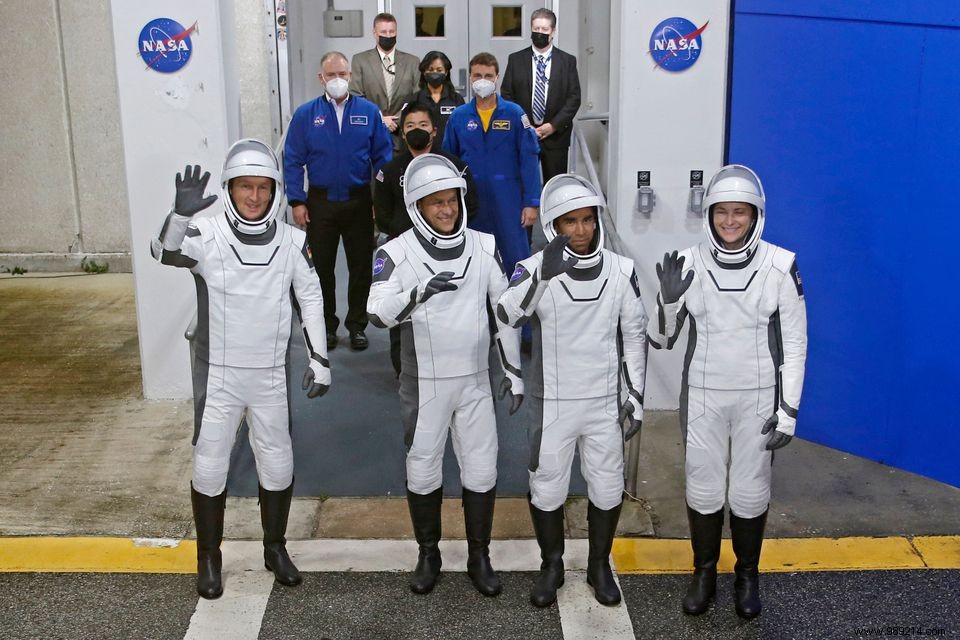As space debris poses more and more problems, the International Space Station recently performed a maneuver to avoid one. Previously identified, this object did not represent any danger, however, because NASA was following its trajectory.
According to the European Space Agency (ESA), more than 34,000 pieces of space debris more than 10 cm would orbit the Earth. Obviously, these represent a serious danger for satellites as well as the International Space Station (ISS). There could even be talk of disruptions in exploration missions to Mars. Recently, NASA set the ISS in motion in order to dodge debris, as explained by the Reuters news agency on November 12, 2021.
This maneuver came just before SpaceX's last Crew-3 mission to the ISS. The objective was to welcome astronauts Raja Chari, Tom Marshburn, Kayla Barron and Matthias Maurer (see photo below) in the best possible security conditions. In addition, NASA was following the trajectory of the object and was therefore able to prepare properly for avoidance.

At the maneuver, we find the Russian space agency Roscosmos. The latter indeed ignited the thrusters of the Progress MS-18 freighter for 361 seconds exactly , that is to say enough to allow the ISS to place itself at a good distance from the trajectory of the famous debris. The latter is also well known to NASA, bearing the label 35114 and the reference 1999-025DKS.
The origin of the debris is none other than the test of an anti-satellite missile conducted by China in 2007. This test targeted Fengyun-1C, an old meteorological satellite. At the time, the scientific community did not hide its indignation since this event had generated no less than 3,537 pieces of space debris . However, each of them represents a significant risk for any other object crossing their path. Almost fifteen years later, more than 2,700 of these pieces of debris are still orbiting our planet.
Recall that in May 2021, NASA indicated that space debris had impacted and damaged the robotic arm of the ISS mobile service system (Canadarm2). The date of the impact on this titanium robotic arm remains unknown. Fortunately, the damage was limited to a small section of the arm boom and thermal blanket. While Canadarm2 operations continue today despite the incident, the latter reminds us that it is necessary to "clean up" in near-Earth space.